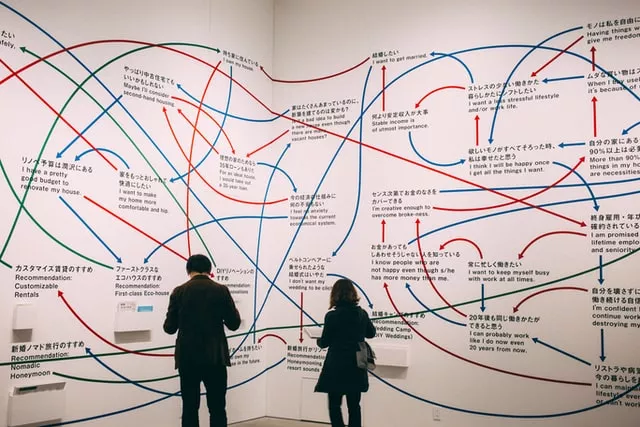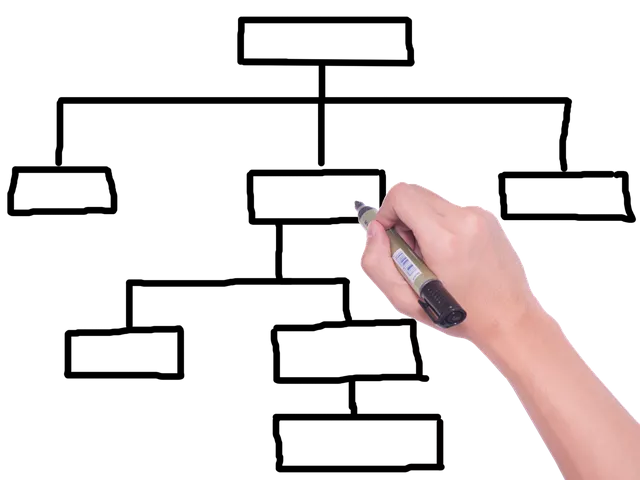What is the concept map method and what is special about this method?

Translated from Estonian. The original post was published by Anna Larionova in Estonian on 29.05.2022. To change the language version, select the desired language from the drop-down menu next to the post on the website or in the settings of the EPALE application.

Foto: charlesdeluvio, Unsplash
"During the pilot studies, it became apparent that the analysis of concept maps can provide the teacher or researcher with more information than multiple choice or short free answers" Katrin Soika (2021)
Concept map method
Concept map or keyword scheme is a great strategy for teaching important vocabulary and key terms in any subject. It is a visual tool that can be used to better understand the learning material and increase learning efficiency.
A map consists of concepts/words, usually surrounded by circles or boxes, and lines connecting different concepts. The concepts/words written on the lines characterize the relationship between the concepts in the boxes.
Concept maps usually have a hierarchical structure: the most important concepts are presented at the top, less important concepts are at the bottom.

But if necessary, the structure can also be free-form, for example starting from the center and developing outwards.

Joonis: Biljana Jovanovic, Pixabay
With the help of a concept map, a verbal text can be presented visually.
The specialty of the method
The uniqueness of the method lies in the fact that the concept map can be used in both - individual and group work, it can be prepared on paper, blackboard or using a computer. Various ready-made templates can be found on the Internet, which simplifies the process of making maps. For example, here: https://padlet.com/annekrull/skeemid or from here: https://cmapcloud.ihmc.us/
D. Ausubel, who is considered the founder of the concept map method, created the theory of meaningful learning. The theory of meaningful learning means that when learning new facts, the student both understands them and is able to connect them with previously learned knowledge. The method creates an opportunity to relate the text to what was previously learned, teaches to distinguish concepts, use them correctly and connect them to each other.
In the field of education, concept maps are used both as a teaching tool and as an assessment tool for students. The construction created with the help of concept maps expresses the student's knowledge in the area under consideration. Concept maps help the student develop creative and critical thinking skills, structure knowledge and reflect how the learned concepts, ideas, laws are connected. The concept map helps the teacher to present complex topics in an easier form, formalize learning materials for courses or training programs, organize effective brainstorming around the necessary topic. The concept map method can be offered as an effective alternative to traditional writing tasks.
Despite the fact that the concept mapping method was originally developed for educational purposes, an increasing number of modern researchers in various fields recognize its effectiveness as an analytical tool.
"Concept cards can be used in all phases of the learning process, from primary school to university. However, this method can still be applied in many areas, for example, concept maps are used by NASA and NSA," Priit Reiska (2016).
SOURCES
- Löfström, E. (2008).Meaningful learning and teacher training. https://www.yumpu.com/xx/document/read/35934496/motestatud-oppimine-ja-opetajakoolitus-erika-lofstrom-haridus
- Reiska, P. (2014). Paradigmatic trends in science teaching in general education schools. Rannikmäe, M., & Soobard, R. (ed.).Using the concept map method in learning and teaching. (pp. 119 – 135). UT Center for Science Education
- Soika, K. (2021).Expanding opportunities on the use of concept mapping as an assesment tool in science education. [Doctoral thesis, Tallinn University] ETERA.https://www.etera.ee/zoom/104835/view?page=1&p=separate&tool=info
- Tammets, P. (2012, February 21).Theory of concept maps. Creating and using concept maps. https://moistekaart.wordpress.com/lugemismaterjal/1-nadal/
- Teachers' page (September 5, 2016). What's going on?A major event on the topic of using concept maps will be held in Tallinn.https://opleht.ee/2016/09/tallinnas-toimub-suururitus-moistekaartide-kasutamise-teemal/



Suurepärane meetod!
Aitäh selle meetodi jagamise ja meeldetuletuse eest!